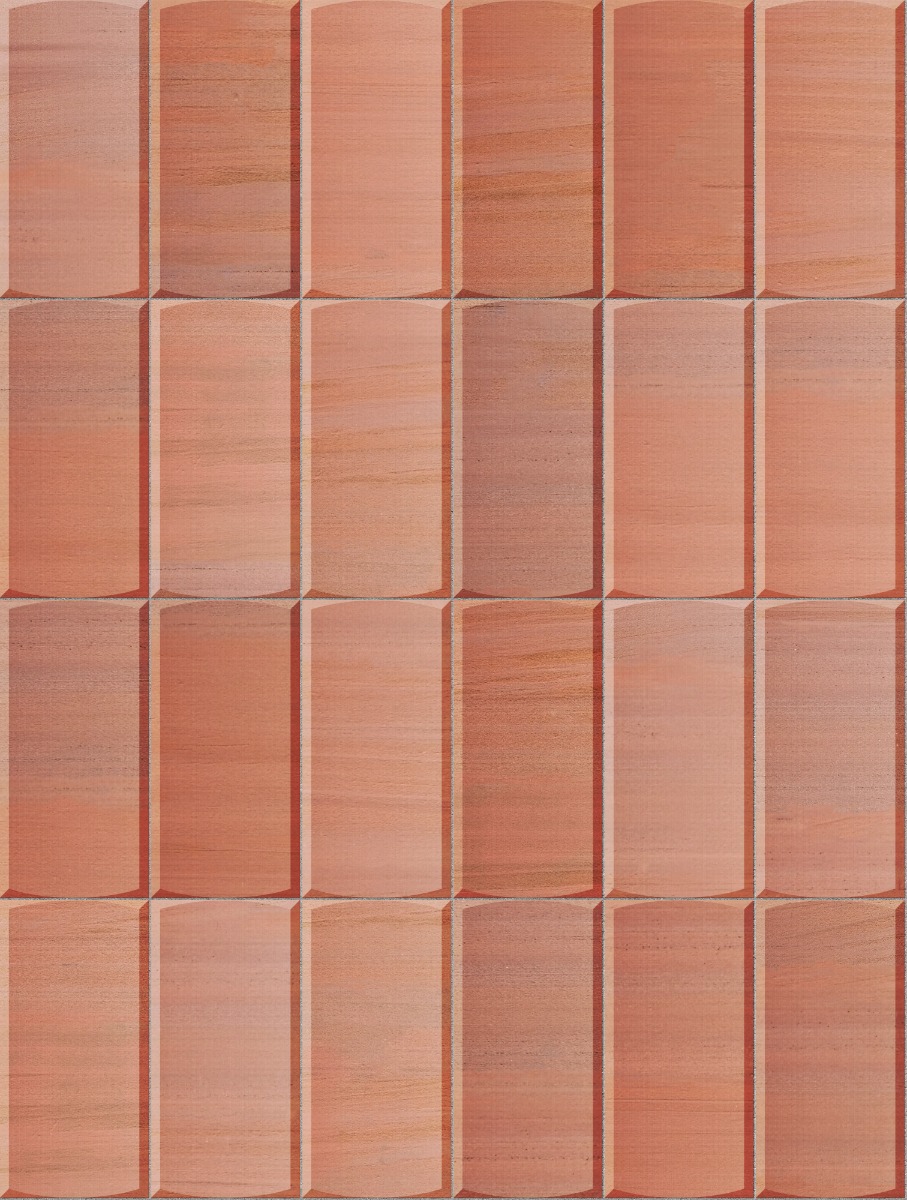Fluted Red Sandstone, Stack
Category
Stone
Download
Edit
Sandstone is a sedimentary rock composed largely of quartz, with a high silica and calcium carbonate content that has been widely used in architecture for millennia for its gorgeous, reassuring, warm colours and soft, uniform surface appearance yet robust, durable and mechanically strong characteristics. Excellent historic examples of sandstone include the ancient temple and caves of Petra, Jordan, and the Red Fort in Delhi, India, to the stunning rhythm and uniformity of tenement blocks of flats in Edinburgh and Glasgow, Scotland. It is also crushed and used for hardcore or aggregate in construction projects, though its use is less common due to the porosity between its sand particles and the binding agent. Sandstone forms when granules are weathered away from other types of rock and are subject to a sequence of weathering and erosion known as denudation. Mechanical weathering from ice, water flow, waves, rain, wind or thermal activity strips or grinds down parts of the origin rock, with particles being transported, or eroded, away from the source area by glaciers, rivers, wind or water, with high concentrations of the particles being deposited in one area. In sandstone’s case, this is typically in bodies of water. The transportation process helps destroy granules of weaker minerals, while rounding and smooth the stronger minerals, typically quartz. The higher the quartz content of sandstone, the more mature and robust it is considered. The particles then undergo a process known as lithification over an extensive period of time, whereby particles are compacted in layers, compressed under their own weight and bound or cemented together when exposed to and combined with chemicals such as silica and calcium carbonate or, in the case of this red sandstone, higher concentrations of iron oxide, which help increase the bond between the granules and reduce the porosity of the newly formed rock. The process of denudation, erosion and formation of the new rock is known as sedimentation.
Sandstone is a very durable rock type with great load bearing and tensile strengths thanks to the quartz and silica content, while possessing a warm, pleasant colour and texture owing to the mixture of minerals present in the sand. Some quartz grains provide a soft white, silver or grey colour, while the reds derive from a high iron-oxide mineral content. Sandstone surfaces are commonly smooth in appearance and profile with some straight, banded, veined lines and linear colour patterns present. The calm, consistent colouring of sandstone is particularly appealing, with the strong linear banding alternating between silver-greys, medium auburn-reds and darker, burnt oranges creating a rich, warm pink, orange, red wash.
Sandstone surfaces are generally reasonably hard, smooth and fine grained thanks to the quartz and silica contents present during the lithification process which achieve strong binds and a fine, consistent grain, popular with masons as these characteristics are excellent for carving and crafting decorative, ornamental pieces. Its hardiness, durability and compressive strength allow sandstone to be used for structures, while remaining relatively soft enough to cut effectively to be carved into blocks, bricks, panels, or other shapes for external cladding due to its weather resistance, owing to its high density and reasonably low porosity, particularly when cut from mature sandstone. It can have a smooth to very rough surface, with the rich, iron-red colour being particularly attractive, providing a warm, inviting feel. Sandstone can adopt a variety of finishes, including natural hand cut, honed, brushed, and polished and is frequently used for, and well suited to, construction projects and decorative applications alike, from high traffic driveways, paths and floors as paving slabs with good, inherent slip resistance; to garden or interior wall tiles; external façades and cladding systems; as feature elements like countertops, stairs, window and door surrounds; or in gardens as boulders, ledges, paths and rockery aprons, kitchens, bathrooms and fireplaces in residential and commercial applications.
A seamless stone texture with red sandstone arranged in a stack pattern. Seamless textures can be tiled repeatedly across a surface without visible seams making them useful for architectural drawings and 3D models. This image can be used as a SketchUp texture, Revit material or imported into Photoshop for use in 2D illustrations. A high resolution version of this texture is available, as well as CAD hatches and PBR maps with Architextures Pro.

